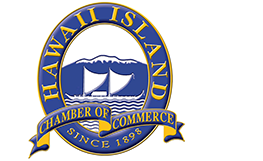In the interest of continuous improvement and providing rich experiences for students, this last summer, teams of faculty and staff from the University of Hawai‘i at Hilo visited with the Natural Energy Laboratory of Hawaii Authority (NELHA) in Kona and the ʻIole Stewardship Center in Kohala. Both visits were part of our island-wide strategy of making sure students are ready for their chosen careers and using our people power to help our ʻāina and our communities.
At NELHA, faculty learned how they might better prepare our students for the work of work in the various industries represented. As we look to the ocean environment more and more for food and environmental health, numerous skills are needed. If one wants to work in aquaculture, for example, having strong background in fish physiology is essential.
For other areas, some background in marine technology and engineering would be useful, even for those students who do not intend to become engineers. There will be consistent need for trained professionals and NELHA, and having faculty learn more about those needs helps UH Hilo design our curriculum accordingly.
Across the country, colleges and universities are hearing from employers that improved communications skills are needed. Many students hate public speaking, but they realize that they will need to deliver reports and make presentations in almost any job they pursue. Connecting the university with employers helps communicate this message even more clearly.
For many of the small start-ups at NELHA, some business acumen is also essential. Thus our College of Agriculture, Forestry, and Natural Resource Management is looking to infuse their curriculum with courses in business and the bioeconomy.
At the ʻIole Stewardship Center, UH Hilo faculty learned of the vision of ʻIole to create a 21st-century ahupuaʻa, a place where an indigenous worldview meets conservation and resource management. If our natural science, geography, Hawaiian studies and anthropology students can become practitioners of aloha and ʻāina, we can prepare them for local and Pacific Island jobs as well as have them give back to the community.
Projects that faculty and students undertake at ʻIole will range from mapping the site to understanding the distribution of native and invasive species to understanding the historical ecology of ʻIole. This work, done in partnership with ʻIole, colleagues from UH and Arizona State University, and the Hawaiʻi Community Foundation, has the potential to demonstrate how we will live and work on islands far into the future and begin to slow the damage wrought by ignoring our environment.
UH Hilo is a campus anchored in this place which thrives on relationships. The connections forged by our faculty and staff this summer are great examples of how building relationships will help us all thrive: richer educational experiences for students and contributions to our island ʻāina and ʻohana.
With aloha,
Bonnie D. Irwin


Recent Comments